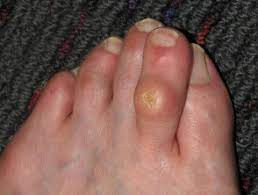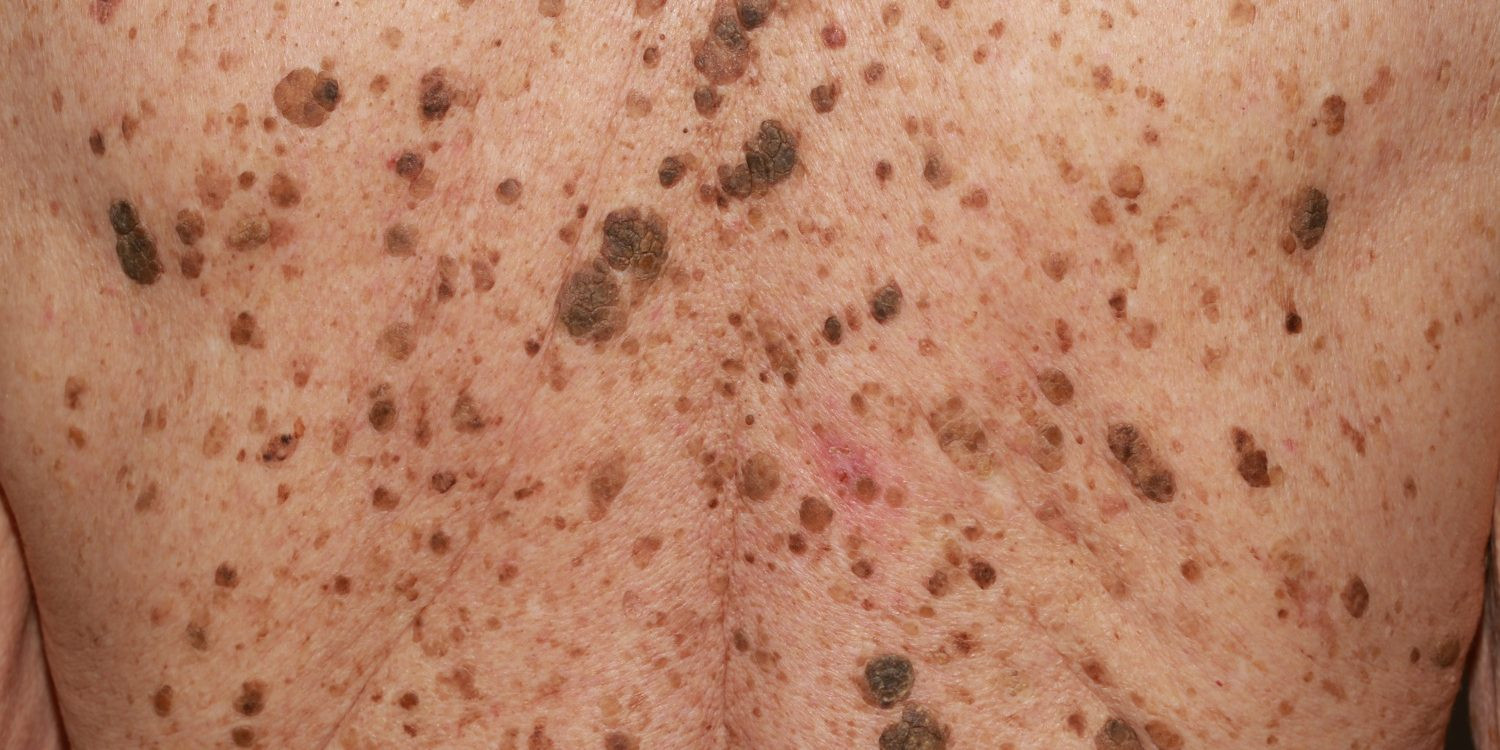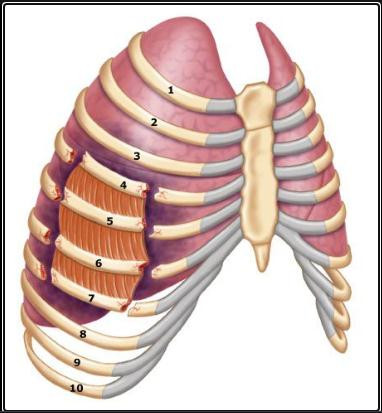Definisi
Klavus, atau yang dalam bahasa awam lebih dikenal dengan mata ikan, merupakan pertumbuhan berlebih dari kulit yang menebal akibat tekanan berulang pada kulit. Klavus biasanya terlihat berukuran kecil pada permukaan kulit tetapi dapat meluas jauh ke dalam kulit dalam bentuk seperti kerucut terbalik. Klavus berisi kumpulan sel-sel kulit mati yang menumpuk. Klavus sangat sering terjadi pada jari kaki karena memiliki permukaan kulit yang rata dan tidak berambut.
Secara umum, terdapat 2 jenis klavus, yaitu klavus keras, yang seringkali terjadi di permukaan atau puncak jari kaki, dan klavus lunak, yang terjadi di antara jari-jari kaki. Klavus keras cenderung kering dan berukuran lebih kecil, dan biasanya terjadi di area permukaan kulit yang keras, di mana kulit menebal atau di area penonjolan tulang pada kaki. Sementara itu, klavus halus cenderung berwarna keputihan, dengan tekstur yang lebih kenyal, dan mungkin tampak seperti luka yang terbuka, serta lebih sering terjadi di antara jari kaki, atau di area kulit yang lembab dan berkeringat. Kedua jenis klavus ini terasa menyakitkan, dan keduanya biasanya disebabkan oleh peningkatan tekanan dari sepatu yang tidak pas atau tekanan berulang lainnya pada jari kaki.
Klavus terkadang sering dibandingkan dengan kalus (kapalan). Keduanya memang sering disebabkan oleh adanya tekanan yang berulang pada kulit, tetapi keduanya tidaklah sama. Klavus biasanya lebih keras, berukuran lebih kecil, dan lebih terasa menyakitkan dibandingkan kalus. Sedangkan kalus tidak menyakitkan. Klavus bukanlah kondisi yang berbahaya, tetapi dapat mengganggu aktivitas sehari-hari. Klavus juga lebih cenderung dialami wanita daripada pria.
Penyebab
Tekanan dan gesekan dari tindakan yang berulang dapat menyebabkan klavus berkembang dan tumbuh. Beberapa sumber tekanan dan gesekan ini meliputi:
- Mengenakan sepatu yang berukuran tidak pas. Sepatu ketat dan sepatu hak tinggi dapat menekan area kaki Anda. Saat alas kaki terlalu longgar, kaki Anda mungkin berulang kali bergesekan dengan sepatu. Kaki Anda mungkin juga bergesekan dengan jahitan di dalam sepatu.
- Tidak menggunakan kaus kaki. Menggunakan sepatu dan sandal tanpa kaus kaki dapat menyebabkan gesekan pada kaki Anda. Kaus kaki yang tidak pas juga bisa menjadi penyebab timbulnya gesekan.
- Memainkan instrumen musik atau menggunakan alat perkakas tangan. Penebalan pada kulit tangan Anda dapat terjadi akibat tekanan berulang dari bermain instrumen musik, menggunakan alat perkakas tangan, atau bahkan menulis.
- Kelainan gerakan atau gaya berjalan yang mengakibatkan peningkatan tekanan pada area tertentu juga bisa menjadi penyebab timbulnya klavus.
Faktor Risiko
Pada dasarnya, siapapun dari segala usia (kecuali bayi yang belum mulai berjalan) dapat menderita klavus. Namun, klavus sangat umum terjadi pada orang yang berusia di atas 65 tahun. Beberapa faktor yang dapat meningkatkan risiko terjadinya klavus antara lain:
- Memiliki kelainan bentuk kaki, seperti:
- Bunion, yaitu benjolan tulang abnormal yang terbentuk pada sendi di pangkal jempol kaki Anda.
- Hammertoe, yaitu adalah kelainan bentuk di mana jari kaki Anda melengkung seperti cakar.
- Kelainan kaki lainnya, seperti taji pada tulang dapat menyebabkan gesekan terus-menerus di dalam sepatu Anda.
- Tidak melindungi tangan Anda, seperti menggunakan alat perkakas tangan tanpa memakai sarung tangan dapat membuat kulit Anda terkena gesekan yang berlebihan.
- Memiliki kelainan gaya berjalan
- Menggunakan sepatu yang berukuran tidak pas, seperti sepatu yang terlalu ketat, terlalu longgar, atau berhak terlalu tinggi
- Memiliki pekerjaan tertentu, seperti petani atau pekerja kebun
- Memakai kaus kaki yang tidak pas atau tidak memakai kaus kaki
- Berjalan tanpa alas kaki
- Sering bersepeda
- Berlutut atau mengistirahatkan siku di atas meja berulang kali
Gejala
Pada dasarnya klavus dapat terjadi di area tubuh mana saja, tetapi lokasi paling sering timbulnya klavus adalah:
- Di bagian bawah kaki (permukaan telapak kaki), di atas lengkungan jari kaki
- Di bagian luar jari kaki kelima (jari kelingking), yang bergesekan dengan sepatu
- Antara jari keempat dan kelima
Beberapa gejala klavus yang mungkin Anda rasakan antara lain:
- Area kulit yang mengeras dan tebal
- Berbentuk bulat atau kerucut dan mungkin muncul sebagai benjolan di kulit
- Kulit yang kering atau bersisik
- Terasa menyakitkan, terutama jika ditekan, atau terasa mengganggu ketika berjalan atau beraktivitas
Diagnosis
Dalam mendiagnosis klavus, dokter akan mulai dengan melakukan wawancara dengan Anda. Dokter akan menanyakan gejala-gejala apa saja yang Anda alami, di mana saja klavus timbul, sejak kapan gejala dirasakan, serta mencari faktor-faktor risiko yang mungkin berpengaruh terhadap timbulnya klavus. Selanjutnya dokter akan melakukan pemeriksaan fisik dengan melihat langsung area lokasi kulit yang terkena. Dokter juga mungkin akan meraba klavus untuk menilai permukaan dan struktur klavus, serta menilai adakah nyeri saat dilakukan penekanan pada klavus. Pada dasarnya, diagnosis klavus dapat ditegakkan berdasarkan hasil wawancara dan pemeriksaan fisik. Biasanya tidak diperlukan pemeriksaan penunjang tambahan untuk mendiagnosis klavus.
Tata Laksana
Pengobatan dan terapi utama klavus adalah dengan menghindari tindakan yang menyebabkan gesekan berulang pada area kulit yang terkena. Beberapa langkah yang dapat Anda lakukan untuk mengatasi klavus di rumah, antara lain:
- Gunakan obat tempel yang dijual bebas. Letakkan obat tempel seperti plester untuk melindungi area di mana klavus berkembang.
- Rendam tangan atau kaki Anda. Merendam tangan atau kaki Anda dalam air sabun hangat dapat melembutkan klavus. Hal ini dapat mempermudah untuk menghilangkan kulit yang menebal.
- Gosok kulit yang menebal. Selama atau setelah mandi, gosok klavus dengan batu apung atau alat pengikis kuku untuk membantu menghilangkan lapisan kulit yang mengeras. Jangan gunakan benda tajam untuk memotong kulit. Jangan gunakan batu apung jika Anda menderita diabetes.
- Melembabkan kulit. Oleskan pelembab ke tangan dan kaki Anda untuk membantu menjaga kulit tetap lembut.
- Gunakan sepatu dan kaus kaki yang nyaman. Tetap gunakan sepatu dan kaus kaki yang pas dan empuk sampai klavus Anda hilang.
Jika klavus tetap ada atau bertambah nyeri meskipun Anda telah melakukan upaya perawatan di rumah, Anda mungkin memerlukan tatalaksana medis, seperti:
- Memotong kulit berlebih. Dokter Anda dapat mengupas kulit yang menebal atau memotong klavus besar dengan pisau bedah, biasanya dapat dilakukan pada rawat jalan. Jangan mencobanya sendiri karena dapat menyebabkan infeksi.
- Obat penghilang klavus. Dokter Anda mungkin juga menempelkan patch (obat tempel) yang mengandung 40 persen asam salisilat. Dokter akan memberi tahu seberapa sering Anda perlu mengganti tempelan ini. Anda juga mungkin mendapatkan resep asam salisilat dalam bentuk gel untuk dioleskan pada area yang lebih luas.
- Sisipan sepatu. Jika Anda memiliki kelainan bentuk kaki yang mendasarinya, dokter Anda mungkin akan meresepkan sisipan sepatu empuk yang dibuat khusus (orthotics) untuk mencegah klavus berulang.
- Pembedahan. Dalam kasus yang jarang terjadi, dokter Anda mungkin merekomendasikan operasi untuk memperbaiki keselarasan tulang yang menyebabkan gesekan berulang.
Komplikasi
Klavus pada dasarnya bukanlah suatu gangguan yang berbahaya dan tidak menimbulkan komplikasi. Namun, klavus dapat menimbulkan rasa nyeri dan ketidaknyamanan saat berjalan atau beraktivitas.
Pencegahan
Untuk memastikan klavus Anda tidak berkembang atau kembali setelah perawatan, Anda harus menghilangkan kondisi yang menyebabkannya. Berikut adalah beberapa tips untuk membantu menghilangkan gesekan dan mencegah pembentukan klavus:
- Gunakan sepatu dan kaus kaki yang pas. Untuk mendapatkan ukuran yang pas, mintalah petugas untuk mengukur kaki Anda, lalu pilih sepatu yang tidak terlalu longgar atau terlalu ketat.
- Potong kuku kaki Anda. Kuku kaki yang terlalu panjang dapat memaksa jari-jari kaki Anda untuk mendorong sepatu Anda. Hal ini dapat menciptakan tekanan yang menyebabkan klavus dapat terbentuk dari waktu ke waktu.
- Gunakan bantalan klavus. Bantalan yang menutupi klavus dapat membantu melindungi dari tekanan berlebih atau gesekan di sekitar klavus Anda. Bantalan ini biasanya berbentuk seperti donat dan harus diposisikan sehingga klavus berada di lubang tengah.
- Jaga kebersihan kaki Anda. Cuci kaki Anda setiap hari dengan sabun, air, dan gosok dengan lembut.
- Jaga kelembapan kaki Anda. Gunakan krim kaki secara teratur untuk mencegah kekeringan dan gesekan pada kulit kaki.
Kapan Harus ke Dokter?
Konsultasikan ke dokter jika gejala klavus Anda bertambah nyeri atau belum ada perubahan meskipun telah mencoba beberapa perawatan di rumah.
Mau tahu informasi seputar penyakit lainnya? Cek di sini, ya!
- dr Anita Larasati Priyono
Corn and Calluses. (2020). Retrieved 09 Mei 2022, from https://www.mayoclinic.org/diseases-conditions/corns-and-calluses/symptoms-causes/syc-20355946
Dinulos, James G. H. Calluses and Corns. (2021). Retrieved 09 Mei 2022, from https://www.msdmanuals.com/professional/dermatologic-disorders/cornification-disorders/calluses-and-corns
Oakley, Amanda. Corn and Callus. Retrieved 09 Mei 2022, from https://dermnetnz.org/topics/corn-callus
Pennycook, Kevin M., et al. Clavus. (2021). Retrieved 09 Mei 2022, from https://www.ncbi.nlm.nih.gov/books/NBK546598/
Stoppler, Melissa Conrad. Corns and Calluses. (2022). Retrieved 09 Mei 2022, from https://www.medicinenet.com/corns/article.htm
Weatherspoon, Deborah. All About Corns and Calluses. (2020). Retrieved 09 Mei 2022, from https://www.medicalnewstoday.com/articles/172459
Wilson, Debra Rose. How to Get Rid of Corns at Home. (2019). Retrieved 09 Mei 2022, from https://www.healthline.com/health/how-to-get-rid-of-corns









